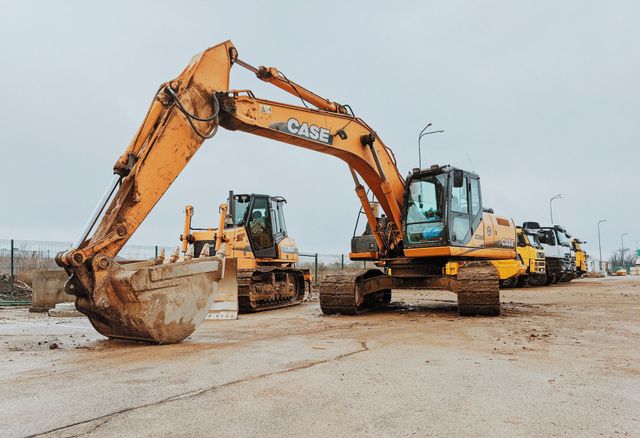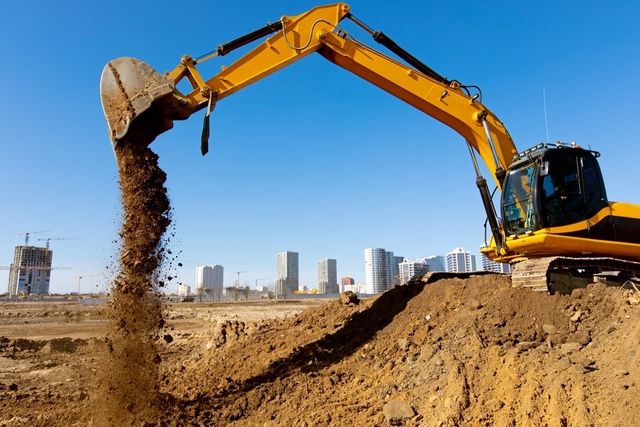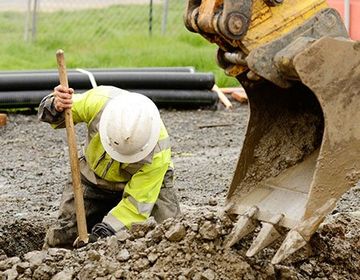Lancaster Excavation - Specialist Excavation Solutions in Lancaster, OH
Lancaster Excavation - Specialist Excavation Solutions in Lancaster, OH
Blog Article
In-Depth Expedition: The Scientific Research Behind Superior Excavation Practices
The world of excavation practices is a domain where science links with workmanship to unearth the secrets concealed beneath the earth's surface area. From old hand devices to modern hydraulic excavators, the development of excavation methods has actually been a testimony to human resourcefulness and technical advancements. What absolutely establishes premium excavation techniques apart is a deep understanding of geological concepts, paired with the application of sophisticated devices and methodologies. By checking out the scientific research behind these methods, we can discover the secrets that lie beneath our feet and appreciate the accuracy and know-how that enter into every dig.
Evolution of Excavation Techniques
Throughout history, the development of excavation methods has actually played a crucial duty beforehand construction methods and historical discoveries. From the rudimentary devices made use of by our ancestors to the innovative machinery used in modern times, the development of excavation methods has actually substantially changed exactly how we come close to various tasks.
In ancient times, hand-operated labor with basic tools such as shovels, pickaxes, and wheelbarrows was the main method of excavation. This labor-intensive process restricted the depth and range of excavations, usually resulting in slow-moving progress and restricted accessibility to particular sites. Nevertheless, as civilizations advanced, so did the strategies and devices used for excavation.
The Industrial Transformation noted a turning point in excavation methods with the intro of steam-powered equipment. This innovation revolutionized the area, enabling for faster and a lot more comprehensive excavations. In modern times, modern technology plays a crucial function in excavation, with developments like general practitioner systems, drones, and 3D scanning boosting accuracy and performance in the area. The evolution of excavation techniques remains to shape the way we build, explore, and understand the world around us.
Duty of Technology in Excavation

The combination of innovative innovation has basically changed the area of excavation, enhancing accuracy and performance to extraordinary levels. One of the vital technical innovations that has actually considerably influenced excavation methods is the use of GPS systems. These systems permit specific mapping of excavation websites, allowing operators to properly find underground energies and structures. Additionally, the usage of telematics in excavation equipment has actually allowed real-time monitoring of maker performance, bring about aggressive upkeep and increased functional efficiency.
Moreover, the arrival of 3D modeling and simulation software has streamlined the preparation procedure for excavation jobs. Drivers and designers can currently envision the entire excavation process prior to damaging ground, identifying potential difficulties and enhancing workflow. Combined with this, the application of drones in excavation activities has actually promoted airborne studies, volumetric dimensions, and website inspections with unmatched speed and accuracy.
Geological Principles in Excavation
An understanding of geological concepts is crucial for making certain the structural integrity and security of excavation sites. Geological factors play a crucial duty in identifying the feasibility and safety and security of excavation jobs.
By conducting extensive geological studies and evaluation, engineers and excavators can establish approaches to mitigate dangers and make sure the effective completion of excavation projects. Eventually, integrating geological concepts right into excavation practices is important for attaining secure, efficient, and sustainable results.

Newest Tools for Excavation
In the realm of excavation practices, modern technologies in devices have revolutionized the performance and accuracy of excavation processes. These drones can offer detailed airborne studies of excavation sites, supplying real-time data on topography and potential hazards.
Another cutting-edge device getting appeal is the application of 3D printing technology for developing personalized excavation devices. This enables the production of specialized tools that are tailored to the details needs of a job, increasing performance and lowering downtime.
Additionally, improvements in products scientific research have actually brought about the development of stronger and much more durable excavation devices. septic ohio. Tungsten carbide-tipped excavator add-ons, for instance, deal remarkable performance in challenging ground problems, enhancing productivity on-site
Science's Influence on Excavation Practices

Moreover, developments in materials scientific research have resulted in the creation of more powerful, extra long lasting excavation devices and devices. As an example, making use of composite materials in miners and shovels has actually boosted their performance and longevity, ultimately raising efficiency on excavation sites. Additionally, clinical study on soil mechanics and geotechnical engineering has supplied important understandings into soil actions, enabling excavation specialists to make informed choices concerning excavation approaches and dirt stabilization strategies. In general, scientific research remains to drive advancement and improvement in excavation practices, making excavation jobs extra efficient, cost-efficient, and lasting.

Final Thought
Finally, the development of excavation techniques has actually been substantially affected by innovations in modern technology and a deeper understanding of geological principles. The latest devices and devices utilized in excavation have boosted efficiency and precision in the area. The application of clinical knowledge has actually dramatically boosted excavation techniques, leading to more lasting and efficient approaches for digging deep into numerous kinds of materials.
In the realm of excavation techniques, modern innovations in devices have septic ohio actually revolutionized the performance and precision of excavation processes. By leveraging scientific concepts, the excavation market has been able to substantially boost efficiency, accuracy, and safety and security in excavation processes. GPR allows excavation teams to non-invasively check and map subsurface frameworks, energies, and possible hazards, enabling them to intend excavation projects with higher accuracy and lowered threat of mishaps.
In addition, scientific research study on soil mechanics and geotechnical design has provided beneficial insights into dirt behavior, enabling excavation specialists to make educated decisions regarding excavation methods and soil stablizing methods. Overall, science proceeds to drive development and improvement in excavation techniques, making excavation jobs a lot more effective, economical, and lasting.
Report this page